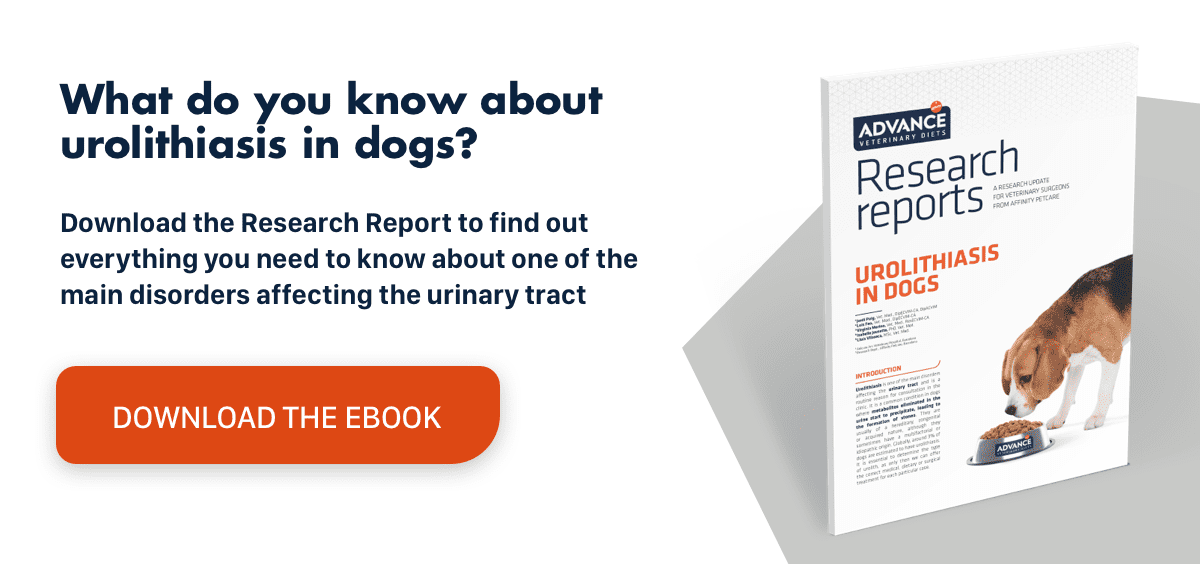Bladder fibrosarcoma in young dogs
Dogs suffer from various types of bladder tumour: fibrosarcoma (fibrous tissue), adenocarcinoma (glandular epithelium), squamous cell carcinoma (epithelial cells), rhabdomyosarcoma (striated muscle).
Tumours in this area may obstruct the flow of urine from the kidneys to the bladder or from the bladder to the exterior and may spread to the animal’s other organs and lymph nodes. Dogs normally develop a high-grade, invasive form of bladder cancer, which grows more quickly and spreads throughout the body.
It is believed that this is due to a combination of different circumstances, such as genetic predisposition (greater likelihood of early onset) and environmental factors, for example exposure to certain chemicals, such as pesticides and herbicides.
Clinical signs
The clinical signs may be confused with that of a urinary tract infection. There is thickening of the bladder wall with total or partial urinary tract blockage. The clinical signs include: haematuria (blood in the urine), polyuria (increased urinary frequency) and dysuria (painful urination). Some patients may develop a limp due to hypertrophic osteopathy.
Diagnosis
A complete physical examination must be performed including a rectal examination (to detect urethral wall thickening, enlarged lymph nodes, vesical masses or distension) and complemented by a complete blood count, urinalysis, blood chemistry profile, urine culture, contrast cystography and a chest and abdominal X-ray to look for lung and abdominal metastases.
A tissue biopsy is required before reaching a definitive diagnosis, as other conditions, such as those discussed earlier, can cause similar signs in dogs, namely bladder inflammation, infection or stones. The biopsy sample can be collected by means of cystotomy, cystoscopy or a urinary catheter.
Patients with lameness have probably suffered bone metastasis, which can be confirmed or ruled out by bone scintigraphy and comparison of the X-ray films.
Treatment
Surgical excision is one option, but tumours cannot generally be removed in their entirety because of their location and urethral involvement. Radiation therapy can be applied to control local tumour growth, but it produces a lot of side effects in dogs, for example, urinary incontinence, cystitis, polyuria, dysuria and stranguria.
Another option is chemotherapy with a drug called piroxicam (or similar), which achieves higher remission rates in dogs. Once the clinical signs have been remitted, continue treatment for another 4–8 weeks in order to eliminate any microscopic traces of the disease. Discontinue treatment if toxicity is detected or the cancer still progresses.
Prognosis
In some cases, dogs survive depending on the early detection and initiation of treatment, tumour size and the grade of any metastatic tumours. Mean patient survival time is usually 6 to 12 months. Fibrosarcoma seems to course with greater gravity in younger dogs.
Case study: fibrosarcoma of the urinary bladder in a young dog1
A 14-month-old female, Catalan Shepherd had a 7‑month history of recurrent urinary tract infection. Diagnostic tests revealed a thickened multilobed focus within the bladder wall, mainly indicative of a local neoplasm or hyperplasm. There were no signs of metastasis in chest X-rays and abdominal ultrasound (although, metastasis was later observed in the lungs and liver).
The multilobed mass was surgically removed for histological examination. The results confirmed the mass was a fibrosarcoma of the bladder. Euthanasia was performed as the patient did not respond to treatment. The diagnosis was confirmed during the necropsy.
